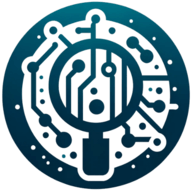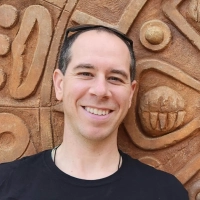5 Top Tips for Conducting Effective Technical Interviews
Technical interviews can make or break a company's hiring process. This article presents expert-backed strategies to conduct effective technical interviews that go beyond basic coding challenges. From simulating real-world scenarios to blending technical assessments with cultural fit, these insights will help recruiters and hiring managers identify top talent more accurately.
- Simulate Real-World Scenarios in Interviews
- Blend Technical Tasks with Cultural Assessment
- Use Scenario-Based Interviews for Deeper Insight
- Conduct Paired Sessions on Actual Problems
- Build Rapport to Reveal True Potential
Simulate Real-World Scenarios in Interviews
One of the most effective ways we identify both technical skills and cultural fit in our interviews at Mixmax is by designing a structured, collaborative technical interview process that mirrors real-world work scenarios. Instead of relying solely on algorithm-heavy whiteboard challenges or abstract technical questions, we create interview tasks that reflect the actual challenges the candidate would face in the role—whether it's architecting a scalable system or prioritizing trade-offs with a product manager.
We also include pairing or collaborative working sessions, especially for engineers, where candidates work through a real-time technical problem alongside a team member. This not only tests their problem-solving and coding abilities but gives us a clear picture of how they communicate, receive feedback, ask clarifying questions, and explain their thinking—all of which are essential in a cross-functional, async-first, remote environment like ours.
For cultural fit, we don't assess based on personality or "culture add" in a vague sense. Instead, we look for alignment with our core values—such as ownership, transparency, curiosity, and collaboration. We integrate behavioral interview questions into every stage of the process, including technical interviews. For example, we might ask:
"Tell me about a time you had to make a technical decision with incomplete information."
"How do you handle feedback on your code or product decisions?"
These questions reveal not just how a candidate thinks, but how they handle ambiguity, collaborate with others, and contribute to a healthy engineering culture.
We've found that this holistic approach—evaluating candidates in context, with the team, using real-world problems—results in better hires who onboard more smoothly and stay longer. It also reduces bias, since every candidate is assessed against the same criteria using a clear rubric. And it gives candidates a more realistic sense of what working at Mixmax is like, which leads to stronger mutual fit.
The result? Fewer mismatches, stronger collaboration from day one, and more confidence across teams in the hiring decisions we make. It's not just about finding the smartest candidate—it's about finding someone who will thrive in our environment and elevate the people around them.

Blend Technical Tasks with Cultural Assessment
We assess both technical skills and team fit by going beyond binary right-or-wrong tasks. For technical interviews, we often run collaborative debugging or system design sessions that reflect real challenges our teams face. To evaluate cultural fit, we look at how candidates respond to ambiguity, how they explain trade-offs, and their curiosity when asking questions. One subtle but powerful signal: if they can teach a concept clearly -- it often shows both competence and collaboration potential.

Use Scenario-Based Interviews for Deeper Insight
The best way we have found to interview candidates is to use scenario-based interviews, which are structured like real work and include a collaborative debrief. Instead of asking abstract algorithm questions, we ask candidates to walk us through how they would work through the same challenges we faced (such as debugging a legacy system, launching an MVP under pressure, or navigating disagreement among team members regarding technology choices). After a scenario is first discussed, the debrief allows us to better understand their process, and importantly, their thought process, where they encountered tradeoffs, how said tradeoffs were handled, and how they communicated and collaborated with teammates. This method gives us the opportunity to examine how deep their technical depth goes and to understand how they fit with the pace of the rest of the team, and align with our values as a team. Since using this process, we have significantly reduced the number of mis-hires and have also experienced faster onboarding because our new engineers already "understand" how we think and work!

Conduct Paired Sessions on Actual Problems
We structure our interviews around real-world collaboration, not theoretical puzzles. We've abandoned whiteboard brainteasers in favor of paired working sessions where candidates walk through an actual problem we've tackled--debugging a feature, designing an API, or reviewing code together. This approach demonstrates how they think, communicate, and handle ambiguity in context.
To assess cultural fit, we incorporate questions such as, "Tell me about a time you pushed back on a product decision--how did you handle it?" or "What kind of environment helps you do your best work?" These questions reveal much more than asking, "Are you a team player?"
This approach has significantly improved our hiring process. Candidates feel more at ease, we gain insight into both skill and style, and the hires we make ramp up faster and integrate with the team more quickly. It's not about passing a test--it's about building with someone you'd actually want to work with on a deadline.
Build Rapport to Reveal True Potential
In Software Engineering, there isn't a strong correlation between highly productive employees and high-performing interview candidates. The behaviors that lead to good performance on the job do not directly correspond to those that result in a positive interview. Traits such as modesty, humility, patience, and curiosity alone can sometimes hinder a candidate's interview performance.
To address this issue, my primary approach has been to immediately establish rapport with the candidate through respect and trust. I aim to put the candidate at ease and, as much as possible, place them in the same mindset they would have if they were a fellow coworker. This approach has resulted in high-quality talent acquisition and sustained tenure.
So, how do you achieve this? Don't simply ask questions and nod your head at the answers. You can provide your own feedback to their responses. You can endorse their answers or discuss how things are done at your company. Remember, you don't need to be the expert in the room.



